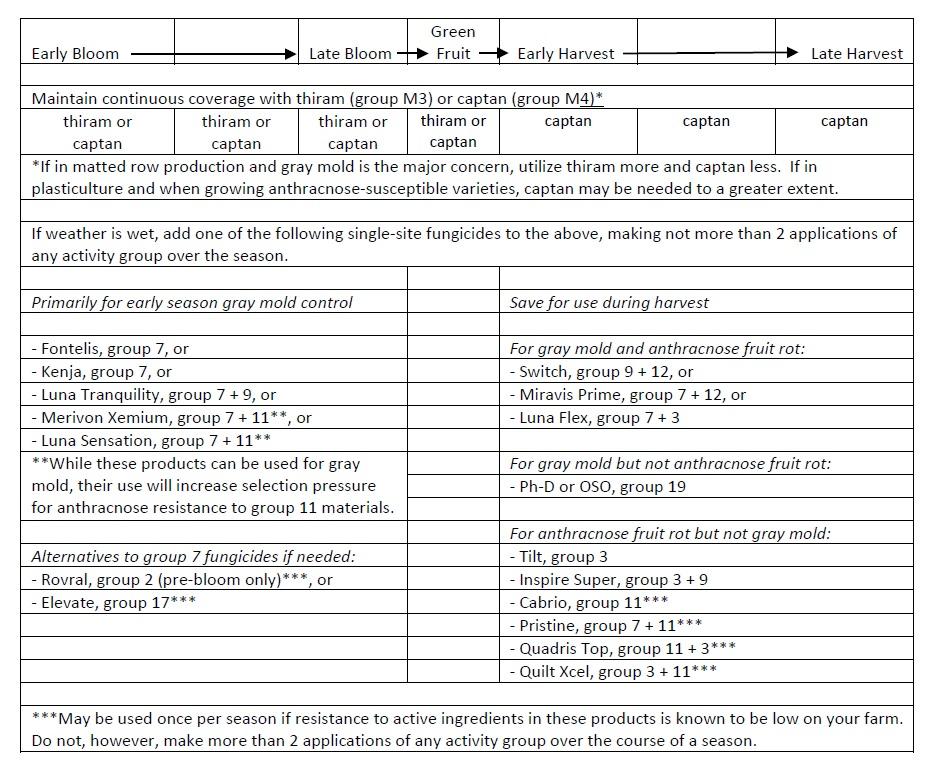Our traditional Botrytis species, (B. cinerea), is frequently resistant to iprodione (FRAC code 2, Rovral), fenhexamid (FRAC code 17, Elevate), boscalid (FRAC code 7, one of the active ingredients in Pristine), and cyprodinil (FRAC code 9, one of the active ingredients in Switch). Notably, B. fragariae seemed to be more tolerant/resistant to fludioxonil (FRAC code 12, the other active ingredient in Switch and also in Miravis Prime) and polyoxin D zinc salt (FRAC code 19, Ph-D or OSO), but it is less resistant to the above active ingredients with a high B. cinerea resistance frequency.
Thus far, no resistance to SDHI fungicides (active ingredients in FRAC code 7) has been detected in the newer Botrytis species B. fragariae. These include pydiflumetofen (the other active ingredient in Miravis Prime besides fludioxinil, which has little effect), isofetamid (Kenja), penthiopyrad (Fontelis), and fluopyram (Luna series). Boscalid, one of the active ingredients in Pristine has less intrinsic activity on botrytis species in general compared to other newer group 7 (SDHI) fungicides and as mentioned, resistance within B. cinerea is high. Strobilurins (FRAC code 11) and DMIs (FRAC code 3) are ineffective against Botrytis.
All of the active ingredients above are single-site fungicides, as indicated by a single number in their FRAC code, aka activity group, or simply “group” as they appear on labels. They target a single step in the fungus’ processes, so simply put, the fungi find it rather easy to develop workarounds. Thiram, which works for Botrytis (and Captan) are multi-site fungicides as indicated by the “M” in their FRAC codes, so workarounds are less likely. Both play an important role in delaying resistance development to single-site fungicides. They are protectants, meaning that they form a protective layer on the surface of plant tissues, thus preventing diseases from growing into the plant. However, new growth that does not have this protective layer is vulnerable, and while the materials may simply be redistributed with light rains, heavy rains may wash the fungicides off.
More information related to fungicide resistance and categorization of products can be found at the Fungicide Resistance Action Committee web site (https://www.frac.info/).


